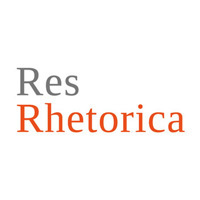Does Film Keep Anti-psychiatry Alive? Aesthetic Knowledge of Mental Illness and Institutions
Does Film Keep Anti-psychiatry Alive? Aesthetic Knowledge of Mental Illness and Institutions
Author(s): Jette Barnholdt HansenSubject(s): Communication studies, Film / Cinema / Cinematography
Published by: Polskie Towarzystwo Retoryczne
Keywords: Antypsychiatry; film; Milos Forman
Summary/Abstract: The paper aims at evaluating contemporary films on psychiatry and their ‘knowledge’ of mental illness: How are mental illness and psychiatric institutions characterized rhetorically, and, are some psychiatric theories more present than others in the epistemological development of the films? I will argue that the film ‘One Flew Over the Cuckoo’s Nest’ (1975) by Milos Forman has an iconic status. It was based on a novel by Ken Kesey from 1961 and can be related to anti-psychiatry – a political movement as well as a psychiatric theory influenced by social constructivism, e.g. Michel Foucault. In The Divided Self (1960) by Ronald D. Laing and The Myth of Mental Illness (1962) by Thomas Szasz conventional psychiatric language was deconstructed. Thus, Szasz pleaded that mental illness did not exist and built up a new effective antipsychiatric language characterized by metaphors such as ‘prison’ and ‘prisoner’. These metaphors were given both presence (Perelman) and evidentia by Forman, who focused on clanking keys, bars, and belt fixation in the introduction to ‘One Flew Over the Cuckoo’s Nest’. Also contemporary movies dealing with psychiatry, such as ‘Girl Interrupted’ (1999) by James Mangold, use the prison as a metaphor, probably as an intertextual reference to Forman’s film. In the end of the paper I will discuss the effect of these movies. Do they keep anti-psychiatry alive in the 21th century – even when the psychiatric theory as well as the political movement have lost influence?
Journal: Res Rhetorica
- Issue Year: 2/2015
- Issue No: 4
- Page Range: 30-37
- Page Count: 8
- Language: English

